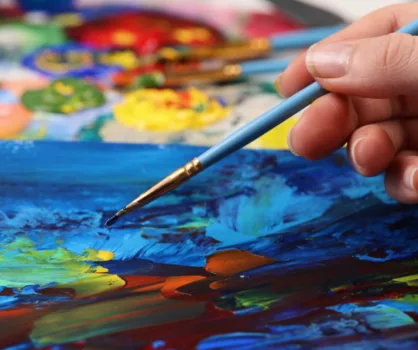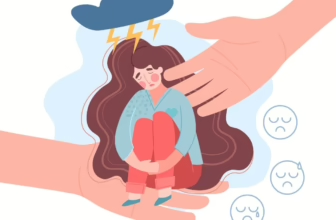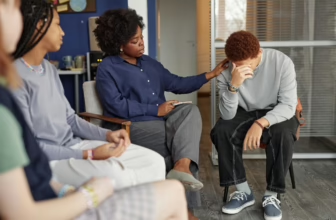Addiction is a complicated condition that affects not only the body but the mind as well. Traditional treatment methods, such as counseling and medication, are often essential for the recovery process, but you benefit more from complementary therapies.
One such approach is art therapy, an innovative and transformative method that fosters self-expression, emotional healing, and resilience. Integrating art therapy in addiction treatment is a form of a new holistic approach that’s proven to boost mental health and emotional regulation.
Understanding Art Therapy Techniques
Art therapy is a therapeutic technique that uses creative expression, such as painting, music, drawing, playing instruments, and other artistic activities, to help people process emotions, reduce stress, and enhance self-awareness.
Unlike traditional group session therapy, which relies on verbal communication, art therapy allows you to communicate through imagery, symbolism, and creativity. This process fosters healing and personal growth.
For people recovering from substance abuse addiction, this non-verbal form of expression can be especially valuable. It helps uncover suppressed emotions, confront past traumas, and cultivate healthier coping strategies for long-term recovery.
The Connection Between Art Therapy, Addiction Treatment, and Mental Health
Addiction often stems from deep-seated emotional pain, trauma or unresolved psychological issues. You might be tempted to turn to alcohol abuse as a means of managing stress, escaping the reality of physical abuse and personal identity crisis.
Art therapy offers a powerful, alternative approach to self-reflection and emotional healing. It provides a safe and constructive outlet for processing negative emotions, fostering self-expression, and promoting long-term recovery.
Music Therapy in Substance Abuse Treatment
According to the American Music Therapy Association, music therapy is one of the top three most effective art therapy techniques for substance abuse treatment. By engaging in music-related activities such as songwriting, playing instruments, or simply listening to music, you can recover faster than with traditional approaches.
Below are some music therapy techniques used by music therapists in the recovery process:
- Lyric Analysis and Discussion: Listening to and analyzing song lyrics can help you relate to personal emotions and gain insights on articulating feelings.
- Guided Music Meditation: Using music as a background for meditation can help you practice mindfulness, reduce stress, and improve your self-esteem.
- Group Drumming and Percussion: Participating in rhythmic drumming sessions promotes relaxation, emotional expression, and a sense of unity within therapy group sessions.
Evidence-Based Scientific Support for Music Therapy in Addiction Treatment
A systematic review at the National Center proved that treatment centers that offer music therapy and music interventions as a treatment plan for substance use disorders record more success stories of addiction recovery compared to their counterparts.
Music therapy helps maintain sobriety by providing a healthy outlet for strong emotions during the recovery journey and decreasing stress hormones. The creative process of creating music is a powerful tool in the healing process that should never be overlooked.
Creating music together with peers suffering from the same affliction of addiction breaks down barriers, encourages open communication, and builds trust.
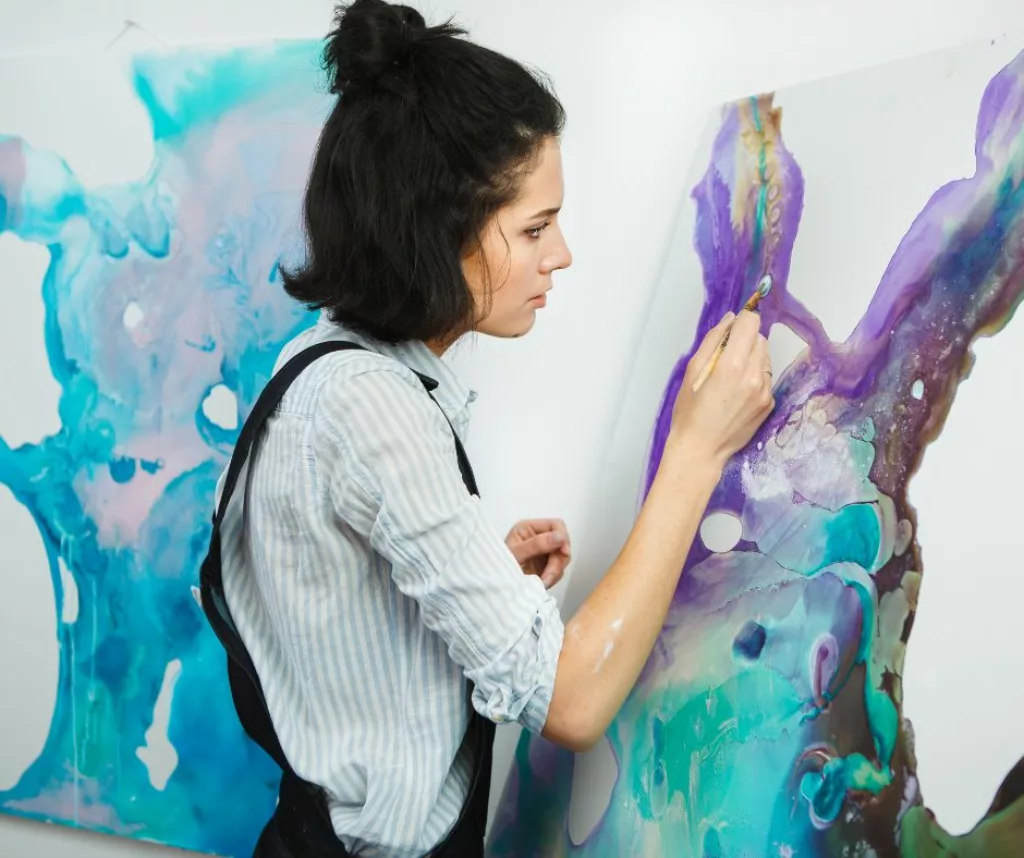
Innovative Art Therapy Techniques in Addiction Recovery
Trained therapists in the addiction field, especially in drug rehab centers in Massachusetts, understand the importance of art therapy in giving substance abuse patients a much-needed emotional release from the bonds of addiction. Art therapy encompasses a variety of transformative approaches that treatment centers use, including:
1.) Visual Journaling
Visual journaling is a powerful technique that combines art and written reflections. Unlike traditional journaling, which relies solely on words, this method allows people to express emotions and thoughts through drawing, painting, or collaging in a personal art journal.
Benefits of visual journaling:
- Encourages self-reflection and emotional processing
- Provides a visual timeline of recovery progress
- It helps you release suppressed emotions and experiences related to addiction
2.) Mask-Making Therapy
Mask-making allows you to create two-sided masks that represent different aspects of yourself. The outer mask represents the persona you show the world, while the inner mask reveals your genuine emotions, struggles, and past traumas.
Why it works:
- Encourages self-discovery and self-identity exploration
- It helps you confront hidden pain
- Promotes healing by externalizing internal conflicts
3.) Mandala Drawing and Coloring
Mandala art therapy involves creating circular designs with intricate patterns that symbolize balance, harmony, and self-awareness.
Benefits in recovery:
- Encourages focus and mindfulness
- It provides a calming effect, reducing stress and cravings
- Symbolizes the journey toward wholeness and healing
4.) Group Setting Art Therapy
Art therapy in a group setting allows you to create artwork together, share your interpretations, and support each other.
Why it is effective:
- Builds a sense of community and belonging
- Reduces feelings of isolation
- Encourages open communication discussions about shared struggles and victories
5.) Abstract Art and Emotional Expression
Struggling with addiction may render you unable to verbalize your emotions. Abstract painting allows you to express your feelings through color, shape, and movement without using words.
Why it works:
- Encourages emotional release without constraints
- It helps process past pain and embrace a fresh start
- Provides an outlet for frustration, anger, or sadness
6.) Clay Sculpting and Tactile Art Therapy in Reducing Stress
Sculpting with clay provides a hands-on, grounding experience that channels emotions into physical creation.
How it helps:
- Strengthens the mind-body connection
- It provides a therapeutic outlet for frustrations and anxiety
- Encourages patience and persistence, reinforcing long-term recovery habits
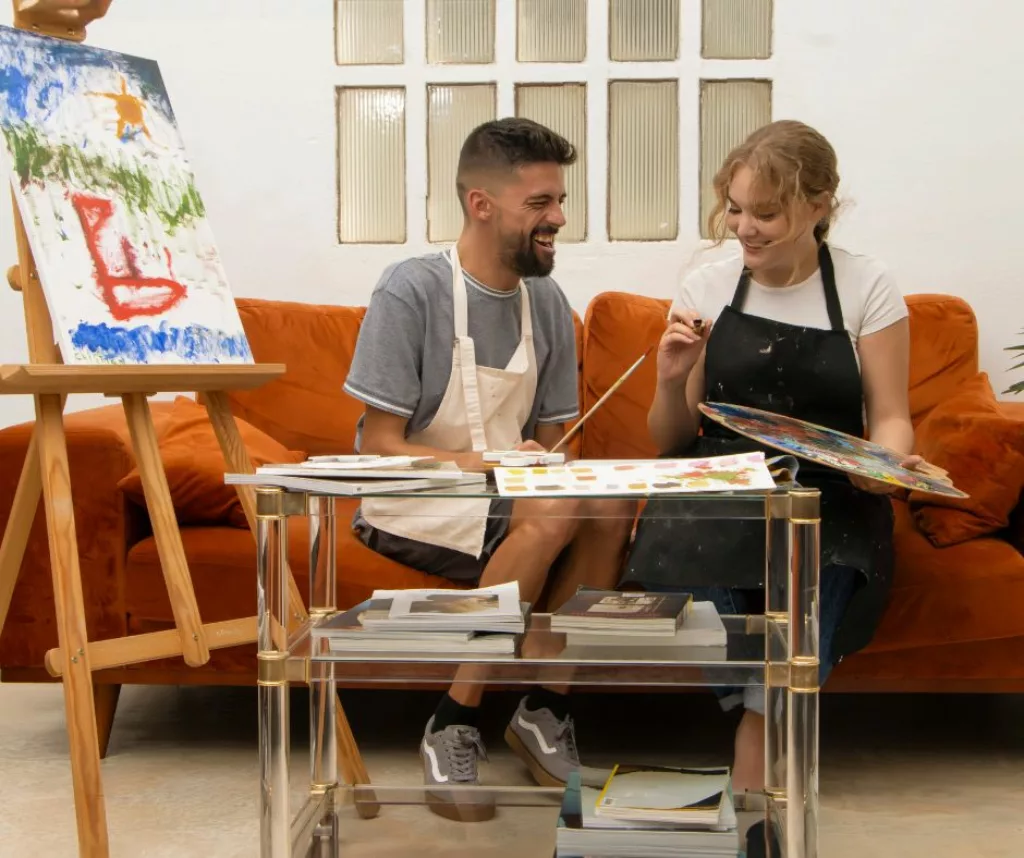
Integrating Art Therapy With Traditional Addiction Treatment
Art therapy works best alongside other treatment methods, such as:
- Psychotherapy: Art therapy provides additional insight into emotions and trauma that traditional talk therapy may not uncover.
- Cognitive Behavioral Therapy (CBT): Helps you reframe negative thoughts while using art to visualize personal identity growth.
- 12-Step Programs: Art therapy complements self-reflection and spiritual healing in programs like Alcoholics Anonymous for recovering alcohol abuse addicts.
- Mindfulness-Based Therapy: Creative expression reinforces present-moment awareness.
Art Therapy for Cultivating Self-Esteem and Self-Awareness
Art therapy, particularly music therapy, is a transformative tool in addiction recovery. Widely adopted in treatment centers, music therapy offers a safe space for self-expression, emotional processing, and personal growth, playing a crucial role in building self-esteem and self-awareness.
Creative expression empowers people to rediscover themselves, develop resilience, and embrace a life free from addiction, whether through painting, sculpting, or music. Art therapy isn’t just about creating art; it’s about creating a new life with a positive future!
Follow me down the rabbit hole!
I'm Alice and I live with a dizzying assortment of invisible disabilities, including ADHD and fibromyalgia. I write to raise awareness and end the stigma surrounding mental and chronic illnesses of all kinds.

